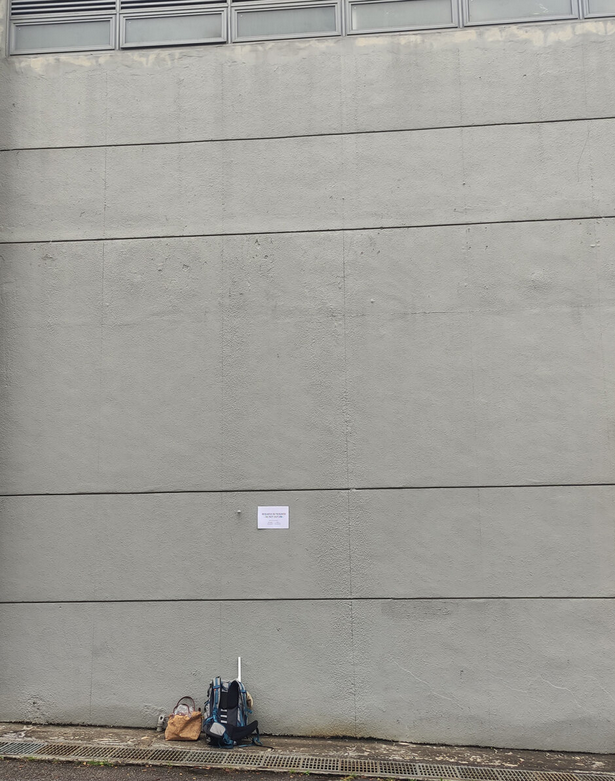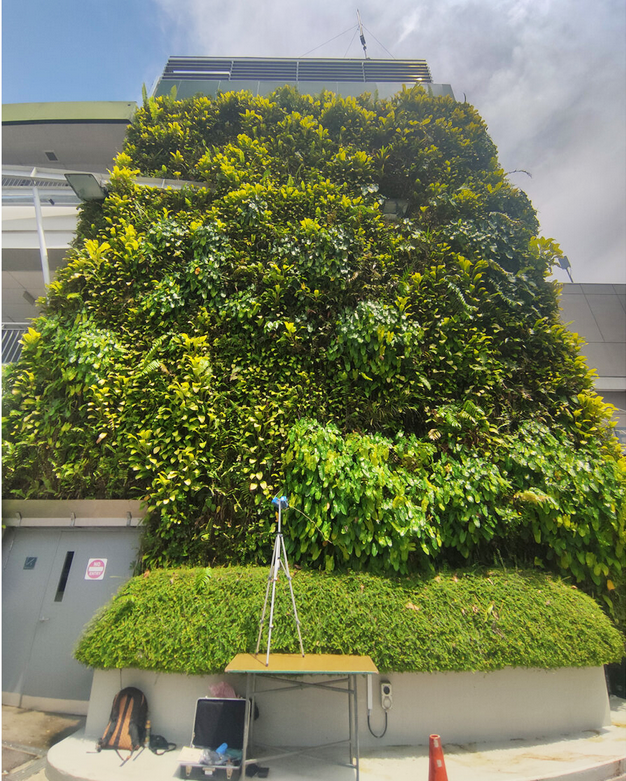 An international team of researchers has systematically compared green walls, bare walls, and natural cliffs, and come to the conclusion that plant-covered facades help cool urban areas and provide habitats for plants, birds, insects and other organisms. The research was led by Utrecht University ecologist Katharina Hecht, and published in the journal Building and Environment. The team analyzed a total of 20 walls in Singapore’s urban environments.
An international team of researchers has systematically compared green walls, bare walls, and natural cliffs, and come to the conclusion that plant-covered facades help cool urban areas and provide habitats for plants, birds, insects and other organisms. The research was led by Utrecht University ecologist Katharina Hecht, and published in the journal Building and Environment. The team analyzed a total of 20 walls in Singapore’s urban environments.
 Green walls were shown to significantly reduce air temperatures around buildings. “With more and more green walls being built, this cooling effect can contribute to mitigating the urban heat island phenomenon. It also helps improve overall climate resilience in cities.” claims Hecht.
Green walls were shown to significantly reduce air temperatures around buildings. “With more and more green walls being built, this cooling effect can contribute to mitigating the urban heat island phenomenon. It also helps improve overall climate resilience in cities.” claims Hecht.
 Green walls hosted over 100 animal species, including insects, spiders, and birds. These numbers far surpass the number of species typically found on non-vegetated walls, which are only a handful. The team also mapped natural cliffs in the area to see if a natural ‘wall’ would attract more biodiversity than man-made walls. Overall, natural cliffs supported slightly higher biodiversity levels.
Green walls hosted over 100 animal species, including insects, spiders, and birds. These numbers far surpass the number of species typically found on non-vegetated walls, which are only a handful. The team also mapped natural cliffs in the area to see if a natural ‘wall’ would attract more biodiversity than man-made walls. Overall, natural cliffs supported slightly higher biodiversity levels.
“The crowns of nearby trees and patches of greenery serve as stepping stones. They allow bees, bugs, and even small birds to hop from tree to tree, and eventually reach the green walls.” says Hecht. “It’s about creating an ecological network. Green walls work best when they’re part of a bigger system of urban biodiversity.” She points out that creating networks of green spaces, as highlighted in her study, is just as critical in temperate regions to ensure that green walls function effectively as habitats.
You can read the original article at phys.org
